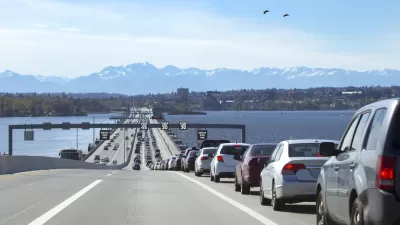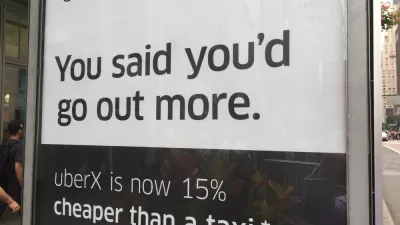A small group of test subjects, enabled with the use of a chauffeur, increased driving distances by a collective 83 percent.

Aaron Gordon shares news of research that attempts to duplicate the effect of rolling out a worldwide fleet of self-driving cars available for use by anyone with the money to pay for a ride.
Mustapha Harb, a Ph.D. candidate at the University of California Berkeley’s Department of Civil and Environmental Engineering, duplicated an autonomous future by hiring a bunch of chauffeurs to drive people around. "The chauffeur…will do the driving for you. And, just like the most optimistic AV future of fully autonomous robot cars zooming around, you don’t even have to be in the car," explains Gordon.
"Using 13 volunteers (a very small sample size due to budgetary constraints) from the San Francisco Bay Area who owned cars, Harb and his team studied their travel patterns using GPS trackers on their cars and phones for one week, then gave them a chauffeur for a week who would drive the participants’ personal vehicles for them. Finally, the researchers observed the subjects for a final week to look for any changes returning to their chauffeur-less life."
As for the findings, the study reports that subjects "increased how many miles their cars covered by a collective 83 percent [pdf] when they had the chauffeur versus the week prior."
The article includes a lot more context, in the form of other historical innovations in transportation that changed the world, as well as discussion of what the study's findings could mean for an autonomous future, should self-driving cars finally become a viable product at scale.

Study: Maui’s Plan to Convert Vacation Rentals to Long-Term Housing Could Cause Nearly $1 Billion Economic Loss
The plan would reduce visitor accommodation by 25,% resulting in 1,900 jobs lost.

North Texas Transit Leaders Tout Benefits of TOD for Growing Region
At a summit focused on transit-oriented development, policymakers discussed how North Texas’ expanded light rail system can serve as a tool for economic growth.

Why Should We Subsidize Public Transportation?
Many public transit agencies face financial stress due to rising costs, declining fare revenue, and declining subsidies. Transit advocates must provide a strong business case for increasing public transit funding.

How to Make US Trains Faster
Changes to boarding platforms and a switch to electric trains could improve U.S. passenger rail service without the added cost of high-speed rail.

Columbia’s Revitalized ‘Loop’ Is a Hub for Local Entrepreneurs
A focus on small businesses is helping a commercial corridor in Columbia, Missouri thrive.

Invasive Insect Threatens Minnesota’s Ash Forests
The Emerald Ash Borer is a rapidly spreading invasive pest threatening Minnesota’s ash trees, and homeowners are encouraged to plant diverse replacement species, avoid moving ash firewood, and monitor for signs of infestation.
Urban Design for Planners 1: Software Tools
This six-course series explores essential urban design concepts using open source software and equips planners with the tools they need to participate fully in the urban design process.
Planning for Universal Design
Learn the tools for implementing Universal Design in planning regulations.
Ascent Environmental
Borough of Carlisle
Institute for Housing and Urban Development Studies (IHS)
City of Grandview
Harvard GSD Executive Education
Toledo-Lucas County Plan Commissions
Salt Lake City
NYU Wagner Graduate School of Public Service





























